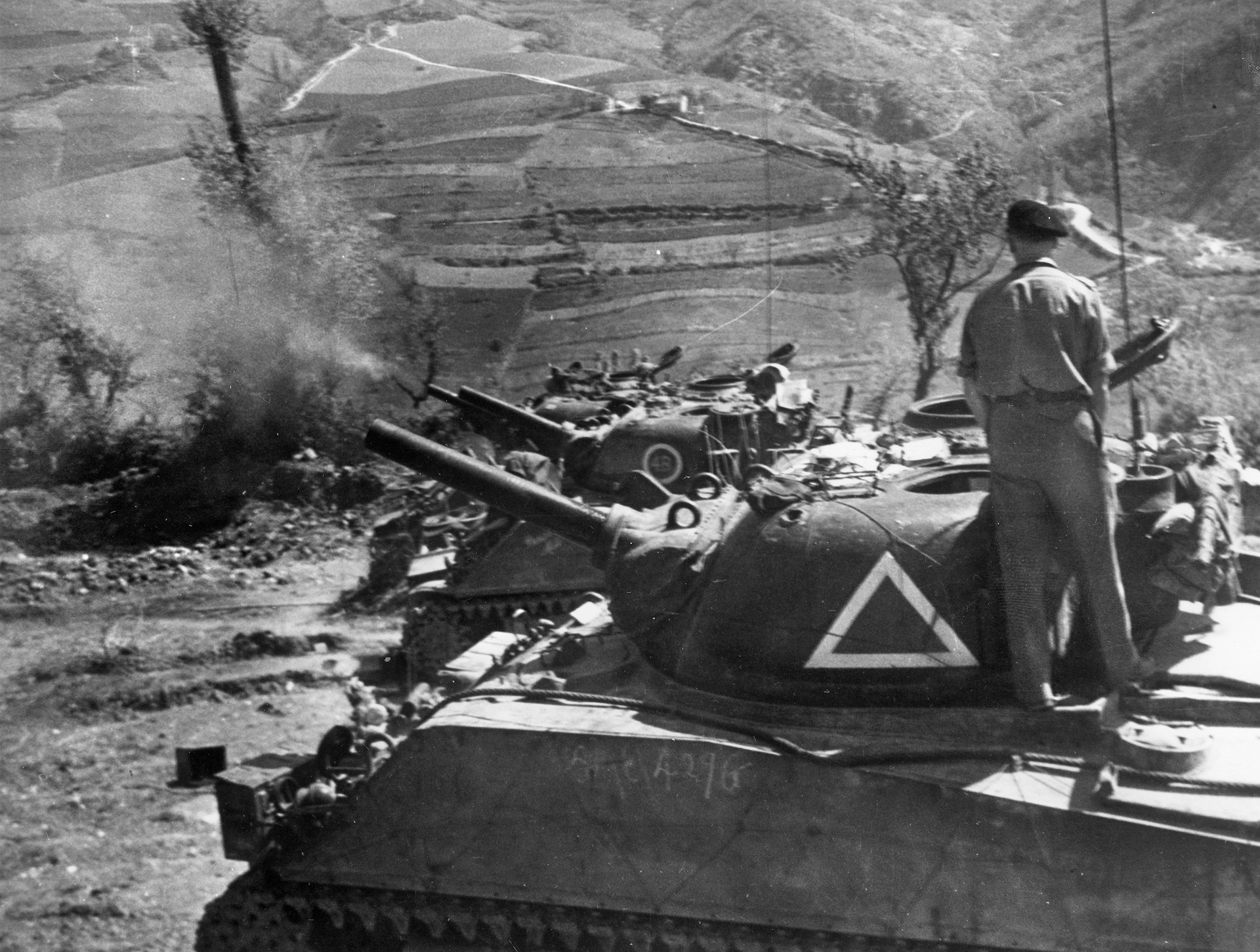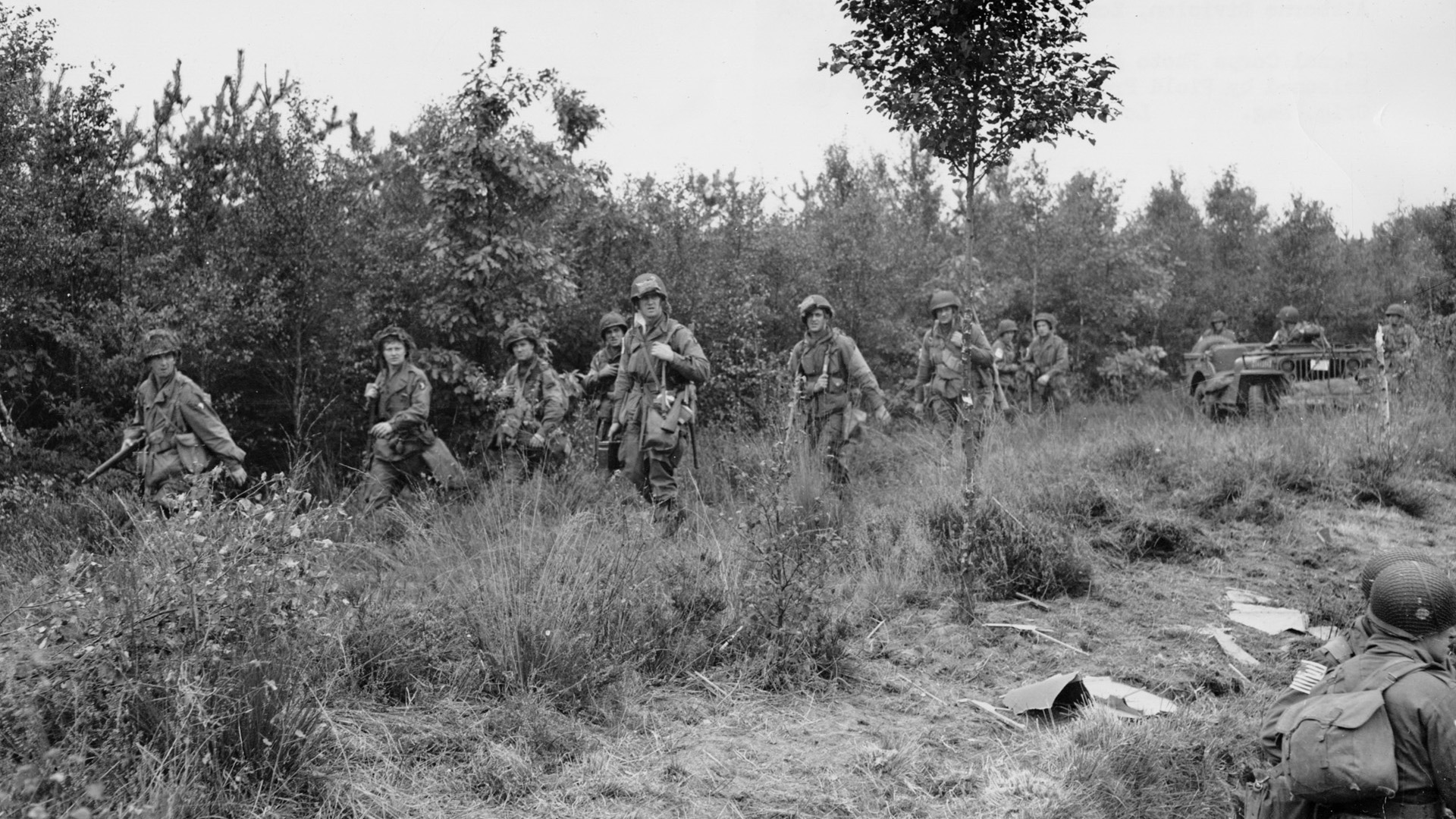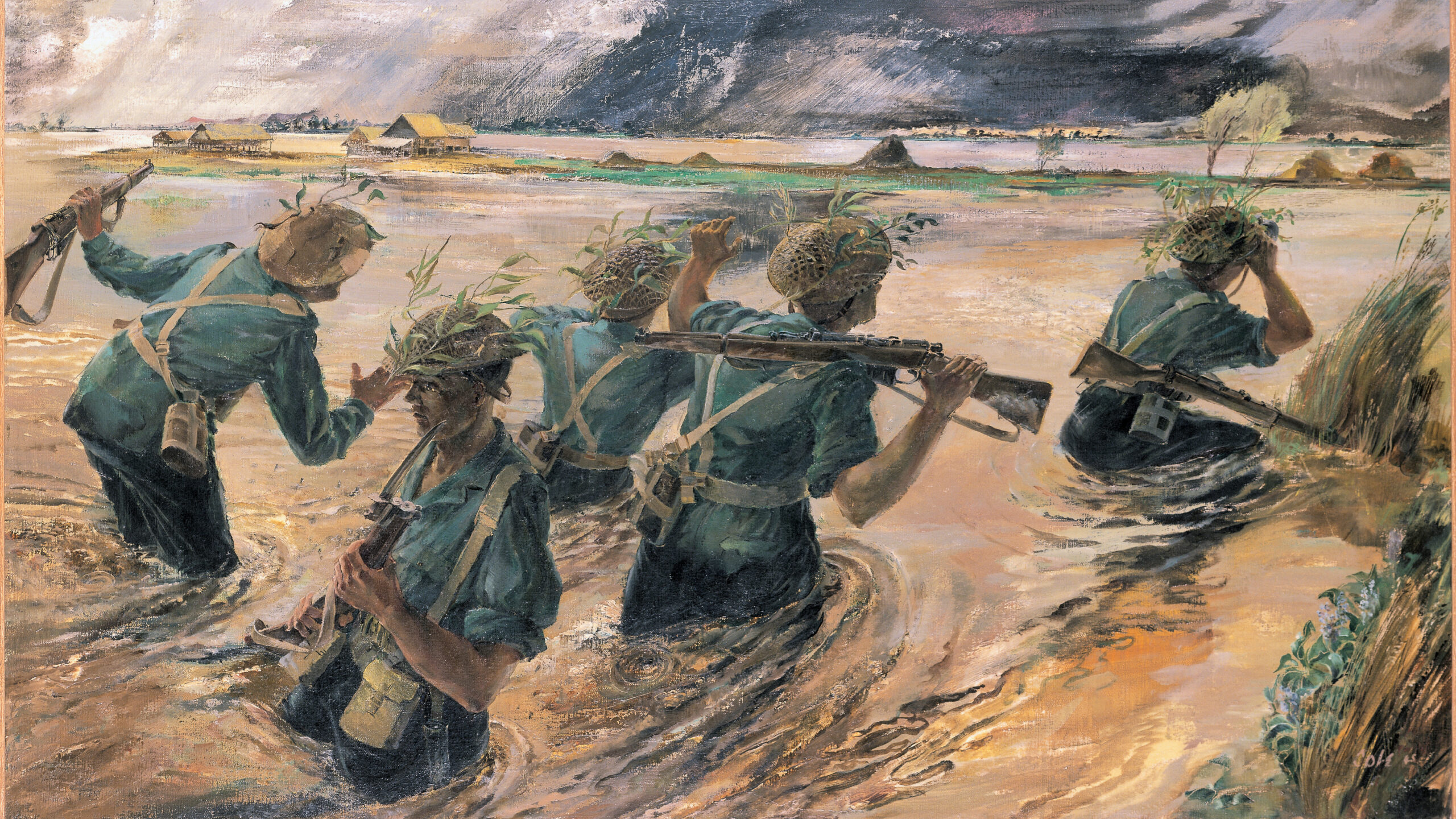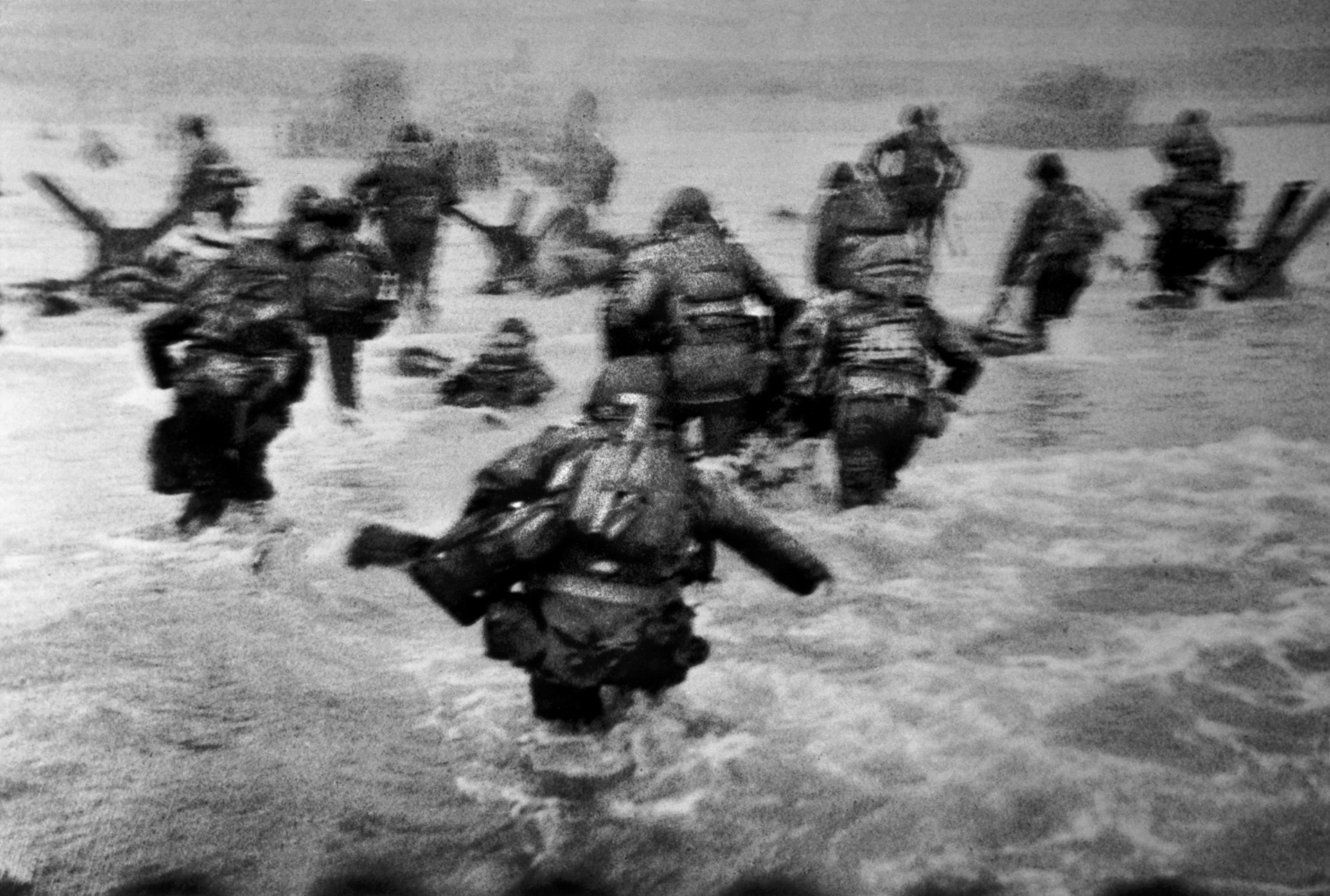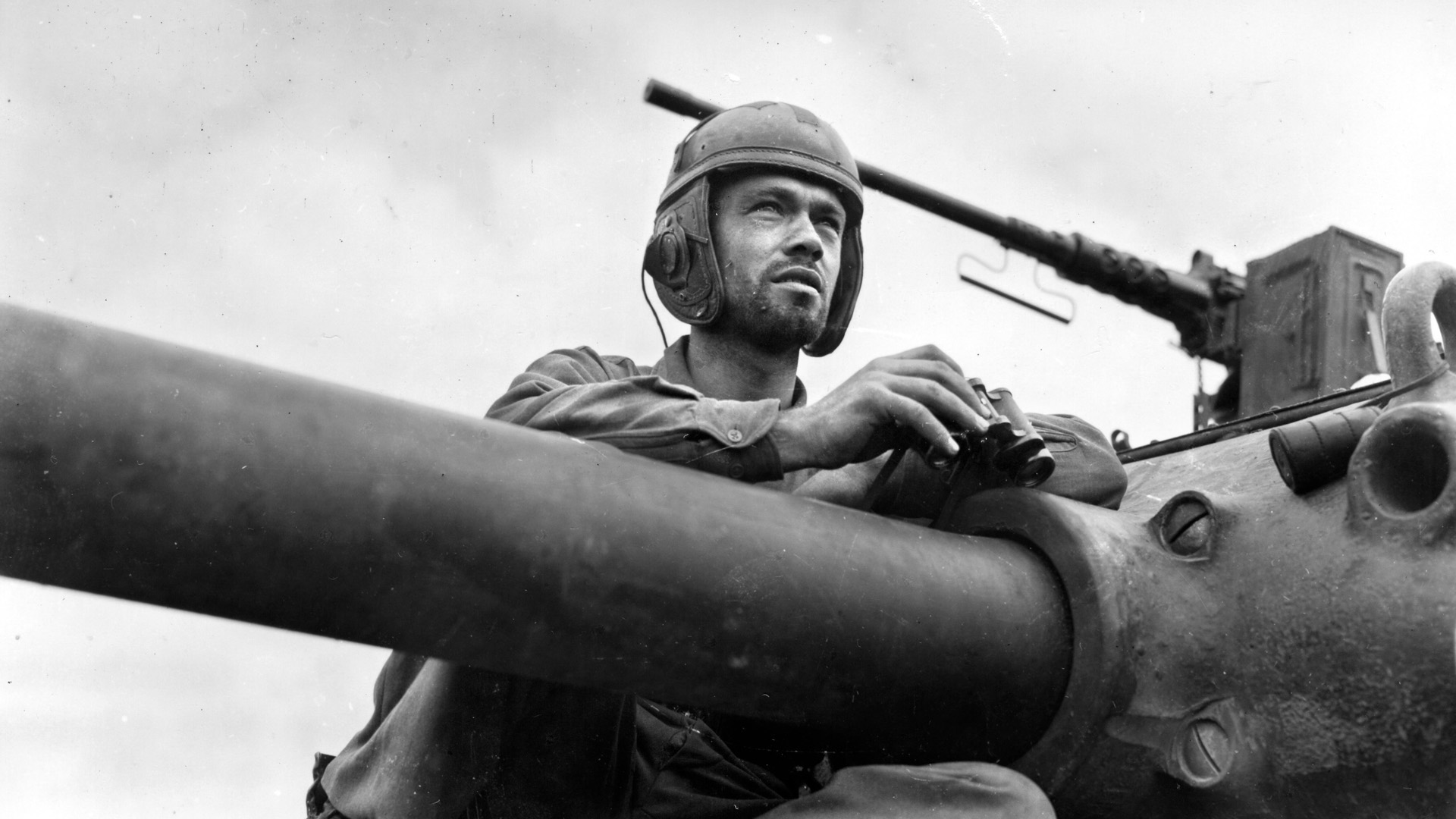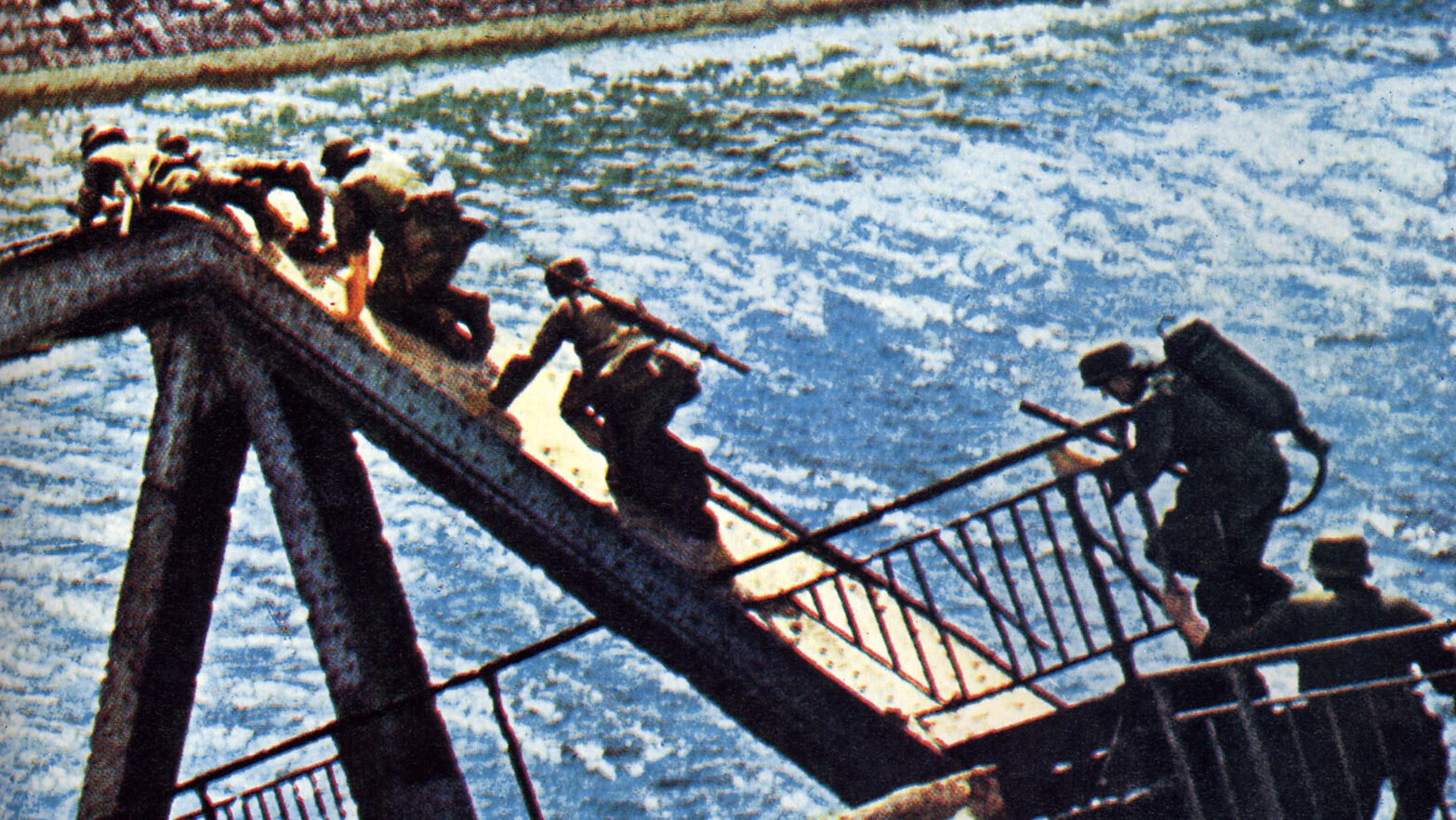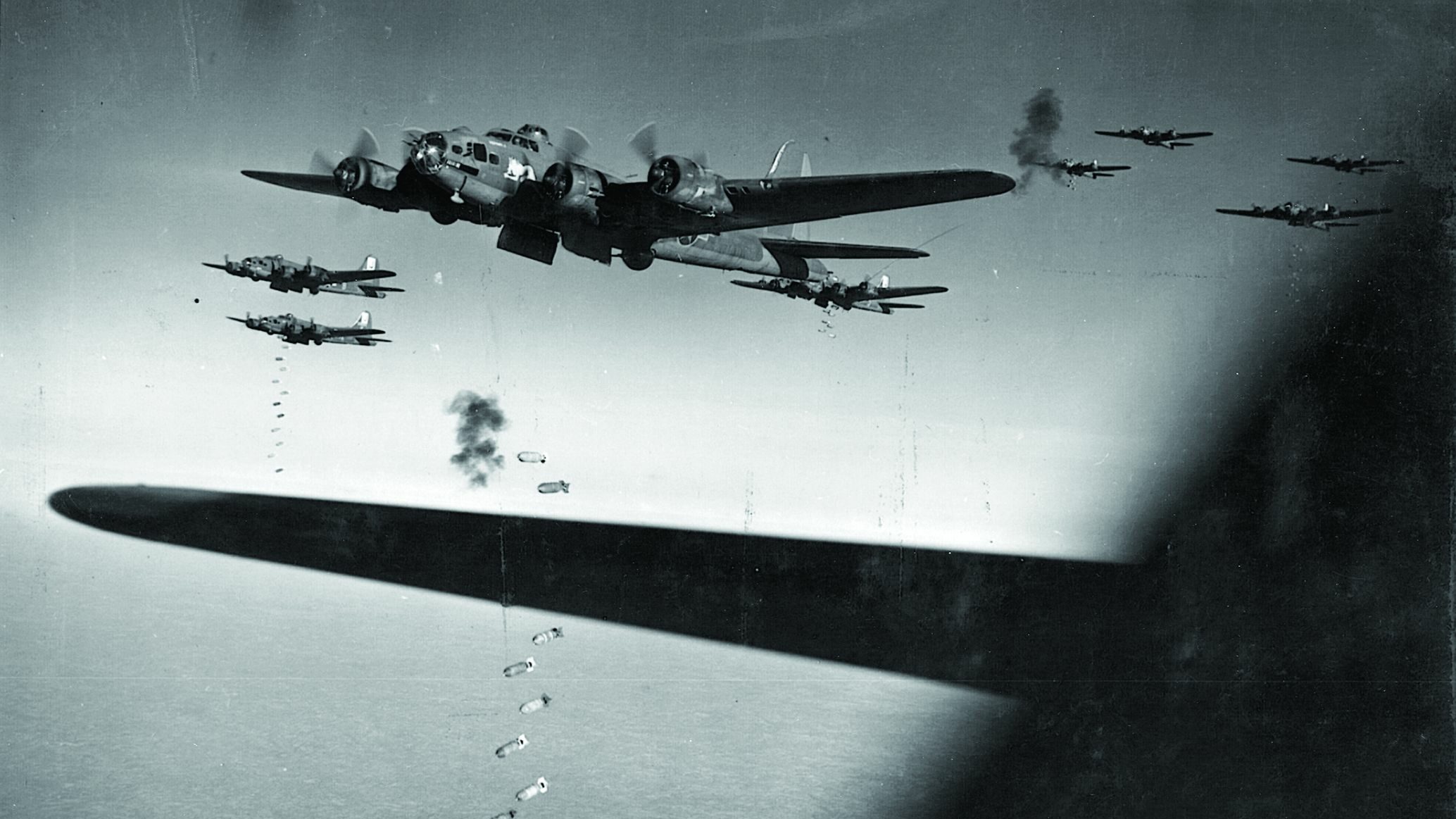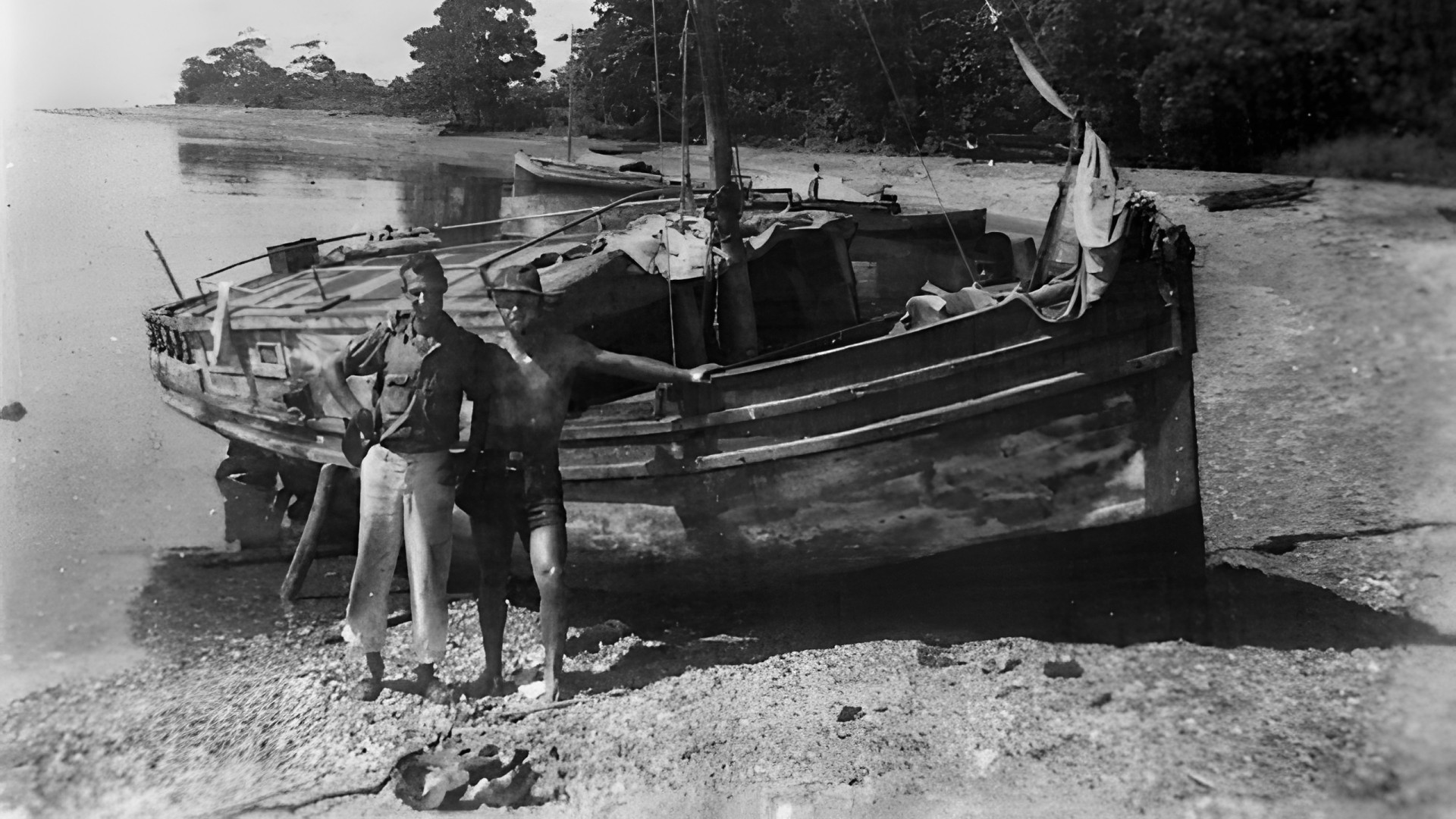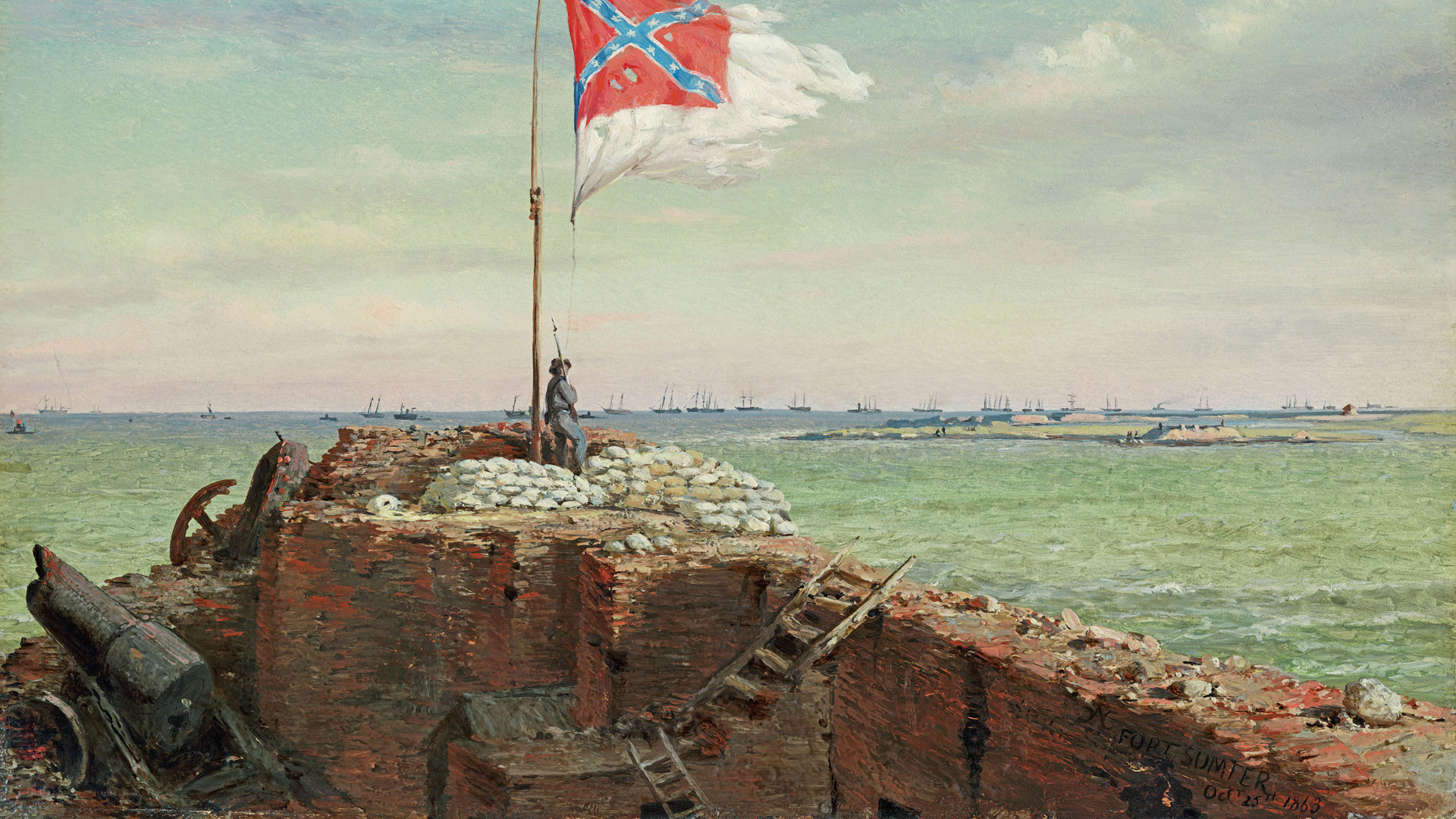By Brig. Gen. (Ret.) Raymond E. Bell
The contribution of the Union of South Africa’s armed forces to the winning of World War II is little known outside South Africa itself. Yet the country sent significant numbers of troops into battle against the Axis powers, both in the air and on the ground, where their contribution has largely been overshadowed by that of their allies and their leaders.
In the Italian campaign, the combat record of the 6th South African Armoured Division remains largely hidden, along with those records of the 1st Brazilian Expeditionary Force, the all-black 92nd U.S. Infantry Division, and various Italian combat groups fighting on the Allied side. It was only in the last years of the war in Italy that the South African division emerged in battle histories as being worthy of recognition for its effective and significant wartime participation.
Initially, the Union of South Africa was not a willing participant in the conflict. The British suppression of two of the former countries constituting the union—the South African Republic and the Orange Free State—in 1902 still rankled among many of their citizens. The South African burghers, as they were called, had fought the British to a standstill, only to be literally starved into submission.
Foremost among those who enthusiastically supported the Allied cause in the war was the former South African general and prime minister, later field marshal, Jan Christian Smuts. His influence initially bore fruit in the formation of the Union Brigade—some 10,000 men drawn from the reserve units of the South African Army.
The brigade, which initially deployed to Kenya, took time to train to a standard of combat effectiveness. It later moved to the island of Madagascar, a French colony controlled in 1940 by the Vichy-French government. Besides the ground unit, South Africa sent pilots that fought gallantly alongside the British Royal Air Force in the Battle of Britain air campaign against Germany. South African ships also sailed with their Allied counterparts.
With a paucity of army divisions in Africa in 1940, the British sought additional contributions from their Dominion countries. The South African response was to organize and train two infantry divisions that were pitted against the Germans and Italians in North Africa.
The better part of the 2nd South African Infantry Division was compelled to surrender in 1942 when German General Erwin Rommel attacked and captured the coastal Libyan city of Tobruk. The 1st South African Infantry Division attacked along with other Allied formations at the Battle of El Alamein in November 1942.
After the breakthrough and rout of the Germans and Italians by the British Eighth Army, the South African land contingent was withdrawn to be converted into what would become the 6th South African Armoured Division.
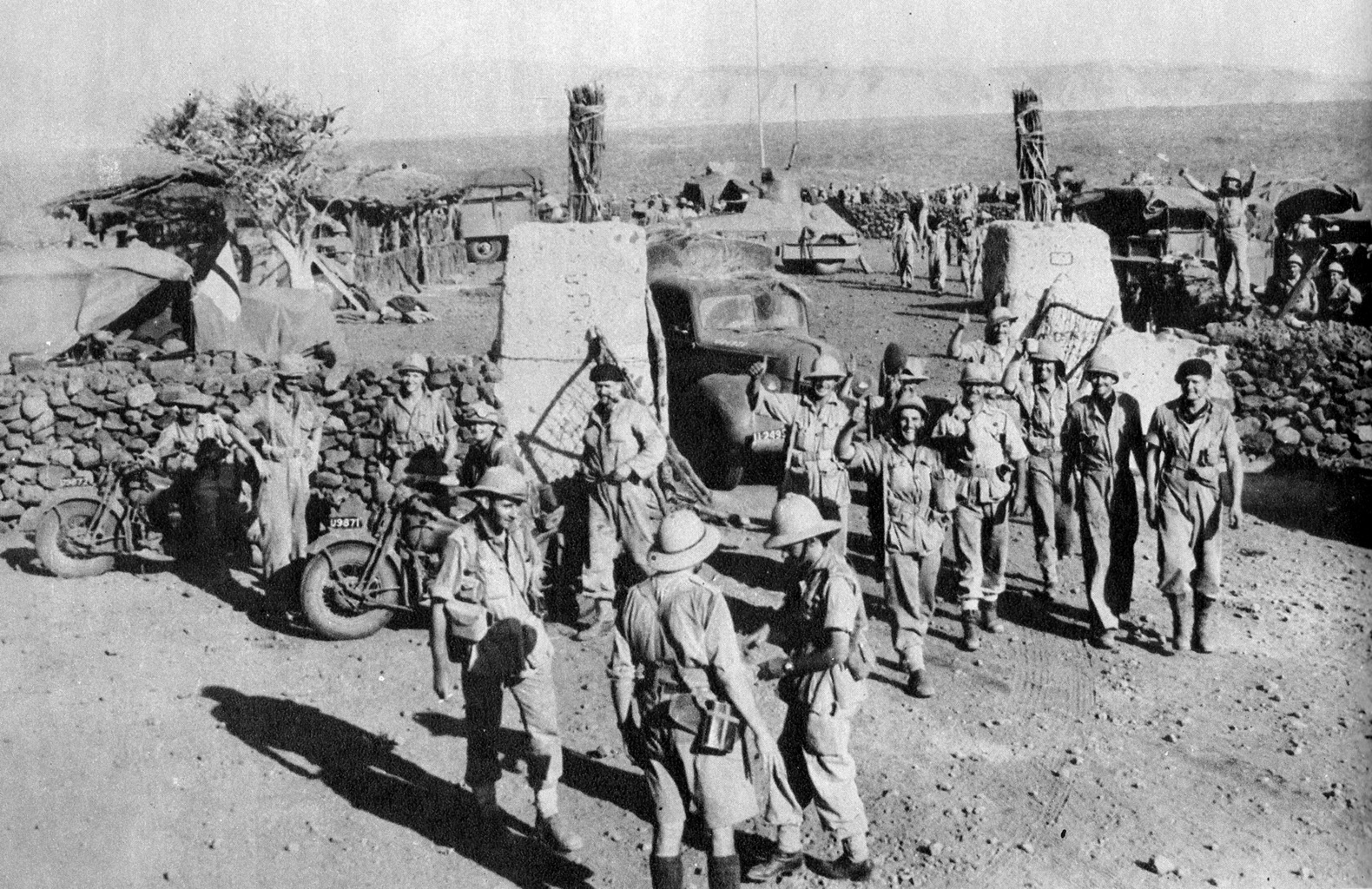
In April 1943, the nascent division began landing at the Italian port of Taranto equipped with American arms, especially M4 Sherman tanks, and equipment. Except for the artillery, the division was not to see real action until after Rome was captured by the Americans on June 4, 1944.
The division had been kept as a reserve formation under British Eighth Army control and then under the U.S. Fifth Army until the end of the war. The division earned its plaudits during the advance north from Rome in the late summer of 1944 until its breakthrough of German defenses in northern Italy in May 1945. On July 18, 1942, British Prime Minister Winston Churchill sent a note to then Maj. Gen. Hastings L. Ismay, who was considering converting the two South African infantry divisions into armored divisions; 300 new Sherman tanks had become available to equip new armored forces, such as the South African units.
Before he agreed to allocating what he called a “windfall,” however, Churchill wanted to know on “what scale” or how the divisions would be organized. He asked if the divisions would be organized with one armored brigade and one motorized infantry brigade. This “new scale” would require only 200 tanks as opposed to the “old 350-tank scale.”
Churchill’s communication is noteworthy for a couple of reasons. First, its timing. The query came when General Sir Claude Auchinleck’s troops had been pushed back into Egypt with his Dominion forces at El Alamein, and he was preparing to launch an attack on Rommel. Unwilling to rush into an assault without additional preparation, Auchinleck was relieved on August 13, 1942, by General Harold R.L.G. Alexander with Lt. Gen. Bernard L. Montgomery as the new Eighth Army commander.
Conversion of divisions, although agreed upon, could not be accomplished in time for Montgomery’s October offensive, which ended with the Axis forces being pushed back into Tunisia. It remained until December 21, 1942, when the South African infantry divisions were withdrawn from Eighth Army before any conversion could begin, and then, instead of two armored divisions, only one—the 6th—was organized, equipped, and trained using mostly American matériel.
Second, Churchill’s concern for the organization and thus the number of tanks in a division reflected on the realization that the balance between the number of tanks in an armored division and the amount of infantry was akimbo. The Americans had determined that their “heavy” armored divisions—consisting of two tank regiments of three battalions each and one mechanized (armored) infantry regiment of three battalions—should be reconfigured so that the division had only three tank battalions and three armored infantry battalions.
In September 1942, the British had two types of armored divisions, of which one was then stationed in Britain and known as the Home Forces division, and the other type fighting in North Africa. The Home Forces division had 201 tanks while the division in North Africa might have as many as 350 armored fighting vehicles. Eventually the smaller division organization prevailed, which was how the 6th South African Armoured Division was organized.
The rationale for reconfiguring the South African divisions from infantry to armor soon became open to question. In the desert environment, armored formations with their high mobility were preferred combat organizations. After a major penetration or envelopment was achieved, it was important to insert a fast-moving unit into the breach to exploit any success.
An armored division’s primary mission was to dash forward, preferably into enemy rear areas in a pursuit mode. If the proposed two South African armored divisions were to be employed solely in North Africa, such reorganization was a plausible solution. But in December 1942, barely a month after Montgomery launched his assault against Rommel, the South Africans were relieved from the British Eighth Army to be organized into an armored formation.
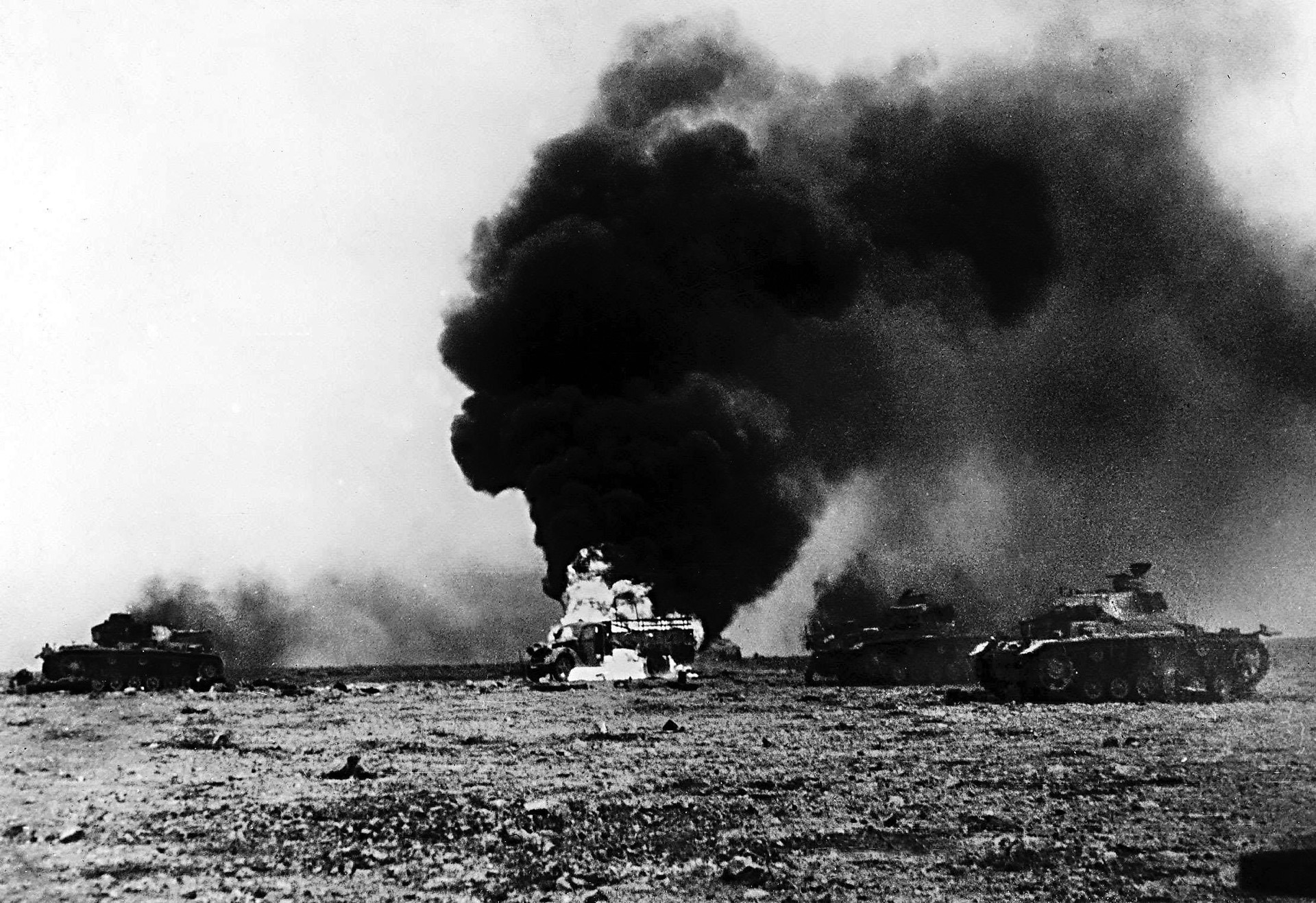
Was the intent to retrain and reorganize the division or divisions in time to participate at a later date in Montgomery’s offensive? The question appears not to have been resolved if, in fact, it was even considered, since reorganizing and retraining a large combat formation would have taken many months to make it an effective fighting unit.
The South African infantry divisions, by the time they were detached from Eighth Army, had suffered sufficient casualties that only one armored division could be formed. The core of the division was made up of veterans of the infantry divisions, and its cadre was supplemented by other volunteers. All had to be retrained to execute the mobile tactics demanded of large-scale armored formations.
The new order of battle for the 6th South African Armoured Division reflected the battle losses of the infantry divisions. Several of the reorganized infantry battalions and tank regiments (designated battalions in some cases) were amalgamated organizations and had dual regimental names. The motorized infantry battalion in the 11th Armored Brigade, for example, was known as the First City/Capetown Highlanders, an amalgamation of two formerly reserve regiments (battalions).
When the division landed in Italy, it consisted of two brigades, the 11th Armoured and the 12th Armoured (Motorized) Infantry. It maintained this configuration until after the capture of Rome in June 1944, after which it was joined by the British 24th Guards Infantry Brigade. The now infantry-heavy division was so organized as to fight more effectively in the mountainous terrain encountered by the Allies when they advanced north to the Po River Valley.
The 11th Armored Brigade as it advanced north from Rome consisted of the division’s mechanized reconnaissance regiment, the Natal Mounted Rifles with 72 Stuart light tanks and Dingo armored cars, plus three tank regiments/battalions and a motorized infantry battalion. The tank units of 55 Sherman M4s each were the 1st Prince Alfred’s Guards, the 1st Special Services Battalion, and the Pretoria Regiment/Princess Alice’s Own. The motorized infantry battalion was the aforementioned First City/Capetown Highlanders.
The division’s motorized infantry brigade consisted of four infantry battalions–—one more than the comparable American infantry organization in its downsized armored division. More so than the tank units, the motorized infantry battalions consisted of amalgamated units. These were the Imperial Light Horse/Kimberly Regiment, the Witwatersrand Rifles/De La Rey Regiment, the 1st Natal Carbineers, and the Durban Light Infantry.
When the 24th Guards Brigade joined the division, it brought with it three of its British Majesty’s own “household” elite infantry battalions. These were the 1st Scots Guards, the 3rd Coldstream Guards, which had fought in North Africa, and the 5th Grenadier Guards. These formations thus gave the armored division additional infantry troops to beef up the type of force needed to defeat the dug-in Germans in northern Italy. Upon attachment to the South Africans, the Guards soon became integral to the armored division.
The enhanced organization with the attached Guards Brigade proved itself as the division moved north toward Florence. The mountainous Apennine terrain soon began to favor the determined German withdrawal north, and Allied tanks became support weapons to the advance of infantry. By doubling the amount of infantry available to the division, it was able to maintain the momentum that kept the Germans retreating and abandoning successive defense lines until the Gothic Line, protecting the approaches to the Po River Valley, was reached and winter stalemate ensued.
The 6th South African Armoured Division entered Italy before the Allied 1944 assaults beginning around Monte Cassino south of Rome were being made. There was no role for a full armored division in reducing that major stumbling block to the northern advance to Rome. If employed in its proper role, the division would have exploited the penetration of the German Hitler and Caesar Lines and been prepared to take part in the capture of Rome.
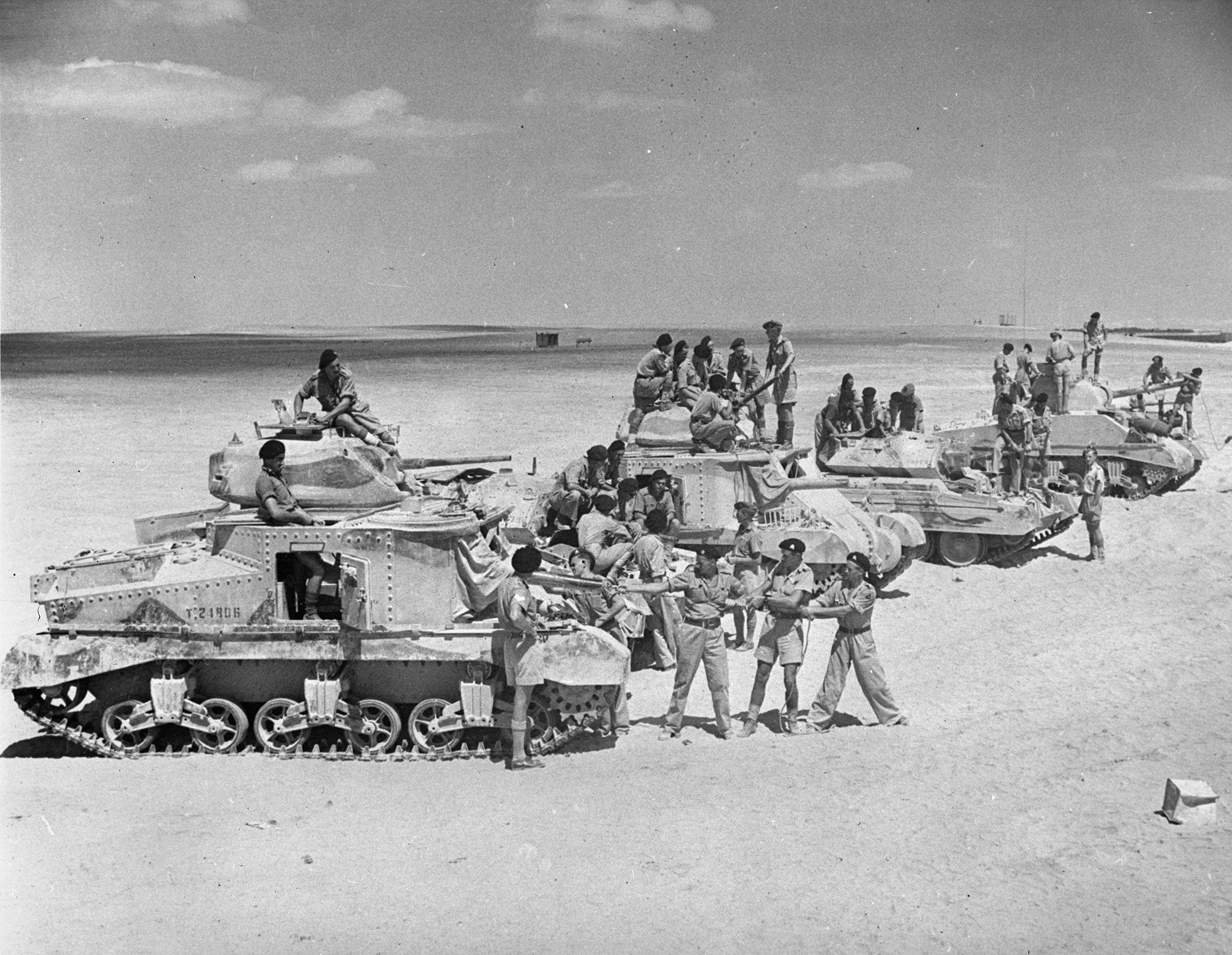
Once the Caesar Line was cracked and pursuit became feasible, the British and American forces became entangled, however, so that the South African division bringing up the rear was forced to give way to other Allied units encroaching on its axis of advance. Thus did the division approach Rome at the tail of other troops racing to claim the capture of the Eternal City.
Once clear of Rome, with the Guards Brigade attached, the division forged ahead, receiving what amounted to its combat baptism in the seizing of the key railroad junction below the town of Chiusi located on the Albert Line near the site of the Battle of Trasimene Lake—Hannibal’s victory over the Romans in 217 bc.
The town itself sits on the hillside overlooking the railroad station in the valley, and occupation of the town dominated the station and rail yard. The division’s mission was to capture the town and the rail complex, which were occupied by retreating German troops.
On June 20, German Field Marshal Albert Kesselring had decreed that the town was to be held at all costs to delay the Allied advance. The South Africans were not expecting any strong resistance, least of all a battalion from the Luftwaffe’s Hermann Göring Parachute-Panzer Division, which was fighting subordinate to German Army command.
To the inexperienced South Africans, the mission was initially misinterpreted and resulted in a significant measure of confusion among the advancing troops. Once it was realized that the mission encompassed not only the rail yard, an attack on the hill town was planned for June 21.
At dawn that day the South African attack stalled in the face of well-planned heavy German artillery fire. Not realizing the German resolve to hold the town and underestimating potential resistance, it was decided that a night attack would be launched upon the arrival of the First City/Capetown Highlander Infantry Battalion.
Unfortunately, as it turned out the Highlanders had already arrived during daylight on June 21 and had gone into the attack without proper reconnaissance or coordination. By midnight the South Africans of the battalion’s Company A were well on the way to the objective. At 1 am on June 22 it made its first contact with the enemy, which turned out to be from one of three companies of the Sturm Battalion of the Hermann Göring Division’s 3rd Regiment supported by tanks.
By 2:30 am Company A was in the middle of Chiusi, positioned at its theater, in a local winery, and in several buildings nearby. There the troops established a defensive perimeter and awaited reinforcements. The reinforcements, which were to be from Companies B and D, however, were blocked by the intense German artillery fire and failed to arrive.
The Germans were not about to let the South Africans consolidate their positions in the town and early on a cold, misty dawn began to infiltrate around Company A’s positions. Enemy tanks rambled around in the town’s streets, and at about 6 pm a panzer in the town square began firing point-blank into houses and the theater occupied by the South Africans.
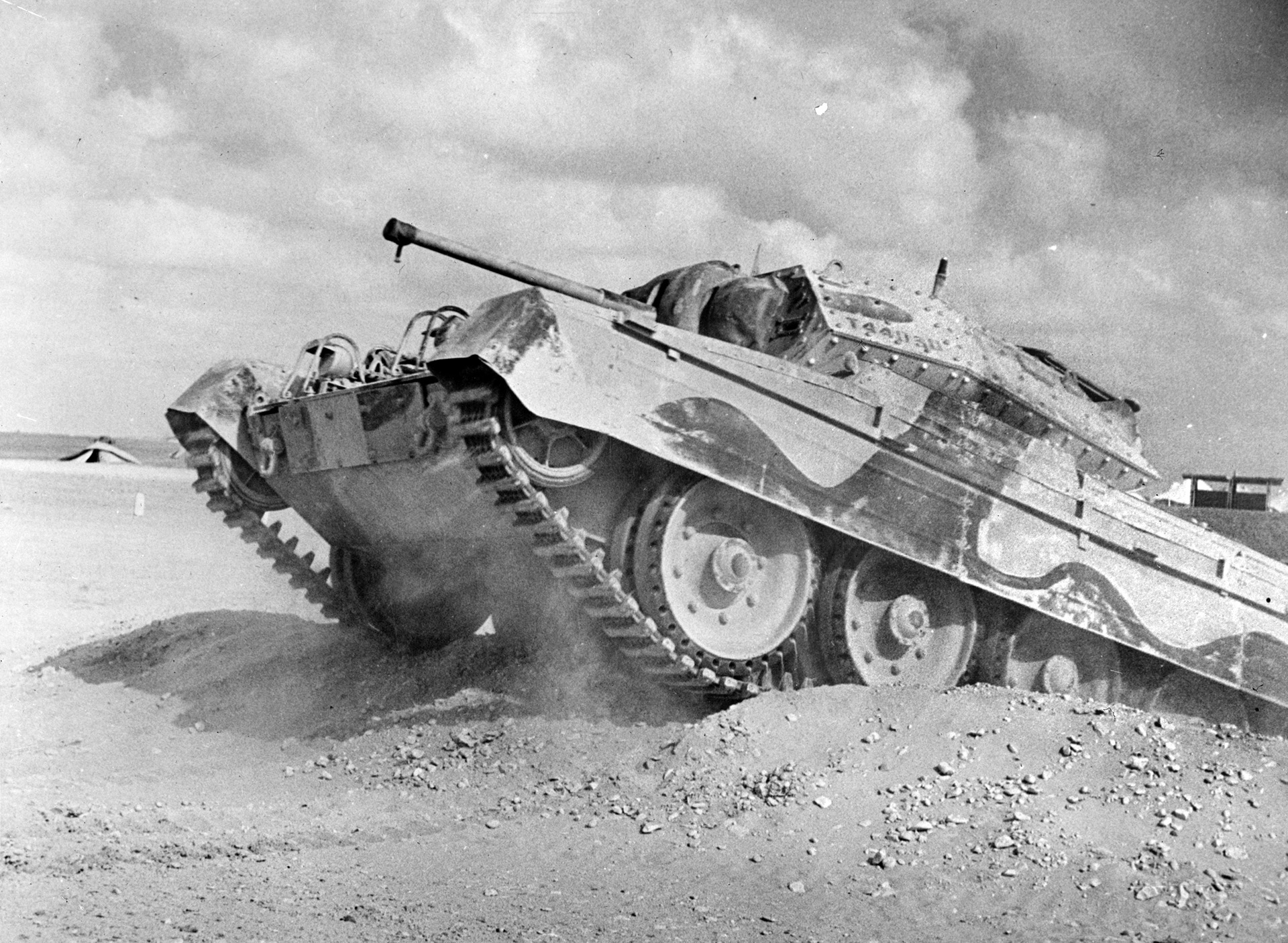
The theater was a special enemy target and was battered to the point where its roof collapsed. Without effective antitank weapons, the Highlanders fought back with machine guns and small arms, but ultimately to no effect. Late in the morning the embattled South Africans were forced to surrender. The losses were high for the Highlanders as 17 soldiers were killed and 27 wounded, with 75 missing—the majority of whom were captured. It was a bitter first defeat in battle for the South African troops.
On June 26, the Royal Natal Carbineers finally wrested Chiusi from the Hermann Göring Division’s soldiers. The stout South African troops quickly recovered from their setback, however, and began moving along the north-south rail line as the Germans, having gained considerable time in defending Chiusi, also moved quickly to take advantage of their delaying action.
The advance north from Rome was now becoming arduous as the terrain became less and less favorable to the employment of large armored formations. Motorized reconnaissance elements preceded columns of vehicles where possible, but because the Germans were experts in the use of explosives, mines, and booby traps, Allied progress was often slow and halting.
The enemy fought a stubborn rear action with the intent of withdrawing to the northern Gothic Line, where the height of the hills, the insufficiency of the road network, and the lack of passes into the Po River Valley favored prolonged defense.
The sector in which the South Africans moved toward Florence was quite undeveloped as far as roads were concerned. Except for a few, the roads were narrow and unpaved. This made the railroads important avenues of advance and was why Chiusi was so key to the German withdrawal. Its retention allowed their units more time to retreat north.
The preponderance of Allied air power restricted German movement north, and so for the enemy traveling at night became important. Traversing terrain cross-country meant that the few good roads and the railroad had to be secured at all costs—especially since at night it was easy to get lost in the hills, and the dense undergrowth made wandering from the narrow paths dangerous and time consuming.
The South Africans, many of whom came from their native rough countryside, quickly got on the tails of the retreating Germans despite enemy delaying tactics. The division, with the Guards brigade, liberated Chianciano Terme on June 28, moving over difficult terrain with infantry supported by a few tanks.
The next day Montepulciano was liberated and the South Africans, carefully making their way on routes west of the north-south railroad, reached Castelinuovo Berardenga on July 4. The Germans employed patrols skillfully, which often resulted in deadly confrontations with the likewise patrolling British and South Africans as they stumbled into each other.
Of the German prisoners, many were young, highly motivated soldiers of the Kampfschule-Sturm-Battalion of the Hermann Göring Division, who fought with a special tenacity.
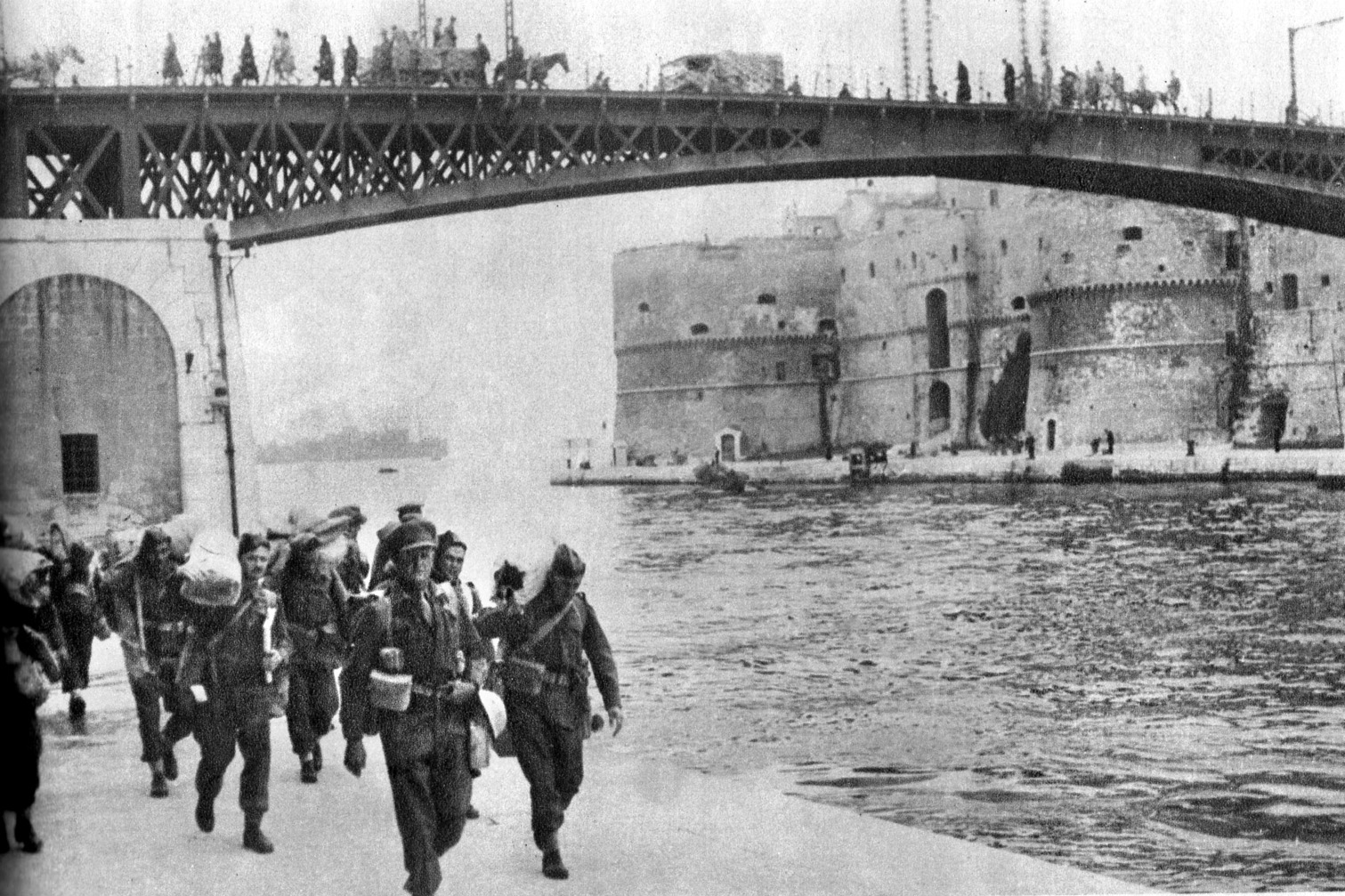
By July 14, with progress over rough terrain and against scattered German resistance slow, patrols of the Grenadier Guards’ 5th Battalion had overrun the temporary German Hilde Line between the towns of Gaiole in Chianti and Castelinuovo Berardenga. Three days later, Gaiole and Radda in Chianti were liberated, with the Royal Natal Carbineers being received joyfully in Radda by a town contingent led by the local priest.
In the meantime, the Hermann Göring Division had been withdrawn from the front lines and dispatched to Poland to help defend against the Soviets on the Vistula River.
With the departure of the elite German division, Kesselring sent elements of the 15th Panzergrenadier Division (armored infantry) and the 1st Fallschirmjäger Division (parachute infantry) against the advancing South Africans and British Guardsmen. Both German divisions contained above average, capable soldiers although the paratroopers were technically airmen since they were German Air Force (Luftwaffe) not German Army troops.
The armored infantry soldiers were also considered to be relatively high-quality men, although replacements for the German Army units in 1944 were becoming mostly older men and those of limited fighting ability. Yet, all the enemy made for a tenacious foe while its units slowly withdrew north to the Gothic Line.
It was strange for the local Italian population to watch the Germans leave and the South Africans and British arrive. Having suffered harshly under what amounted to German occupation, it was hard to believe that their lives were about to change again. To this day, elder inhabitants of the country, no less than in the province of Chianti in north central Italy, still speak of their own or their relatives’ experiences during this hostile time.
So it was on July 19, Guardsmen of the 1st Scots Guards encountered a welcoming population as they advanced on Monte Querciabella, north of the town of Radda. Memories of their arrival with bagpipes blaring are still fresh among the local population of that region.
The South African movement north now was from one prominent terrain feature to another. Progress was measured in terms of mountains assaulted, as on July 20, when Monte San Michele was attacked and the 1st Scots Guards were again confronted by the enemy paratroopers and armored infantrymen.
On July 22, the 12th Armored Infantry Brigade’s Witswatersrand/De La Rey Regiment and the Royal Durban Light Infantry in a coordinated move attacked and threw the foe off Monte Fili, which overlooked the large town of Greve on the road to Florence.
The 3rd Coldstream Guards, at the same time, captured Monte Domini which also overlooked Greve in what has been termed a textbook assault. Two days later, Greve itself was liberated by the First City/Capetown Highlanders,which had use of the major road running north through the town. But progress was still slow.
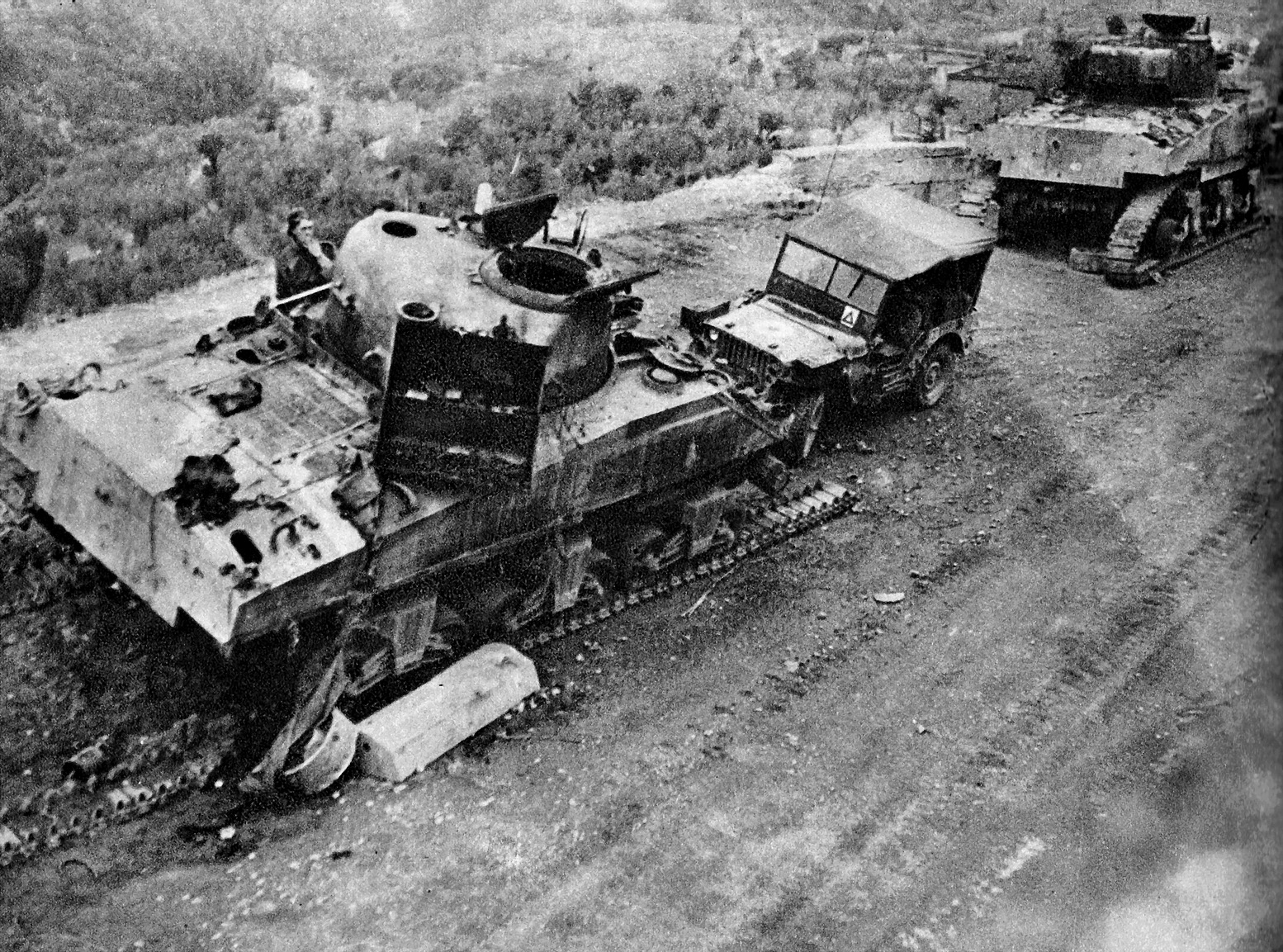
Not until July 29 was Monte Scalari taken. This was a tough battle because the terrain feature was the boundary between the German Tenth and Fourteenth Armies, a critical military seam. The famous old and culturally rich city of Florence was now almost in sight and, on July 30, the South African troopsexperienced fighting close to the city.
On August 1, the Scots Guards captured Poggio ai Mandorli, which anchored the Germans’ last defense line on the Arno River before Florence, the so-called Paula-Mädchen Line.
Florence was not liberated easily. The South African Division was to add the city’s liberation to their unofficial battle honors, but the blown bridges in and around Florence, along with skillful demolitions designed to impede Allied progress, stood in the way. Only the Ponte Vecchio of the Florentine bridges, one of Hitler’s favorites, was spared, and even its use by infantry was made difficult as the buildings next to it on either side of the Arno River were destroyed, leaving huge piles of rubble to be negotiated.
It is asserted that Kesselring had ordered the bridges over the Arno River to be destroyed because he felt he had made a mistake in not doing so when Rome was liberated and thus had lost valuable time in retreating north.
When the South African infantrymen of the Imperial Light Horse/Kimberly Regiment reached the famous Ponte Vecchio on the morning of August 4, they found that the German engineers had skillfully carried out Kesselring’s August 3 order of destruction during the previous night.
Still, in liberating Florence the South Africans had accomplished a mission that British Prime Minister Churchill had expressly sought. It was also time for a pause for vehicle and equipment maintenance—and rest, which was greatly needed after battling through the tortuous terrain of the Chianti province.
Other momentous events were also taking place for the Allies that August. A much disputed invasion of southern France saw the withdrawal of the French Expeditionary Corps and several veteran American divisions from Italy to participate in the action—Operation Dragoon.
The British were especially unhappy that Italy was to be left with just enough Allied troops to continue pressing an enemy that was withdrawing to its final defense line in Italy, the Gothic Line at the top of the Apennine mountain chain with its back to the Po River Valley.
There was also a major change for the 6th South African Armoured Division. It was assigned to the U.S. II Corps of the American Fifth Army. In addition, the division was soon to be placed in reserve as its mobile firepower gave way to a slugging battle of attrition.
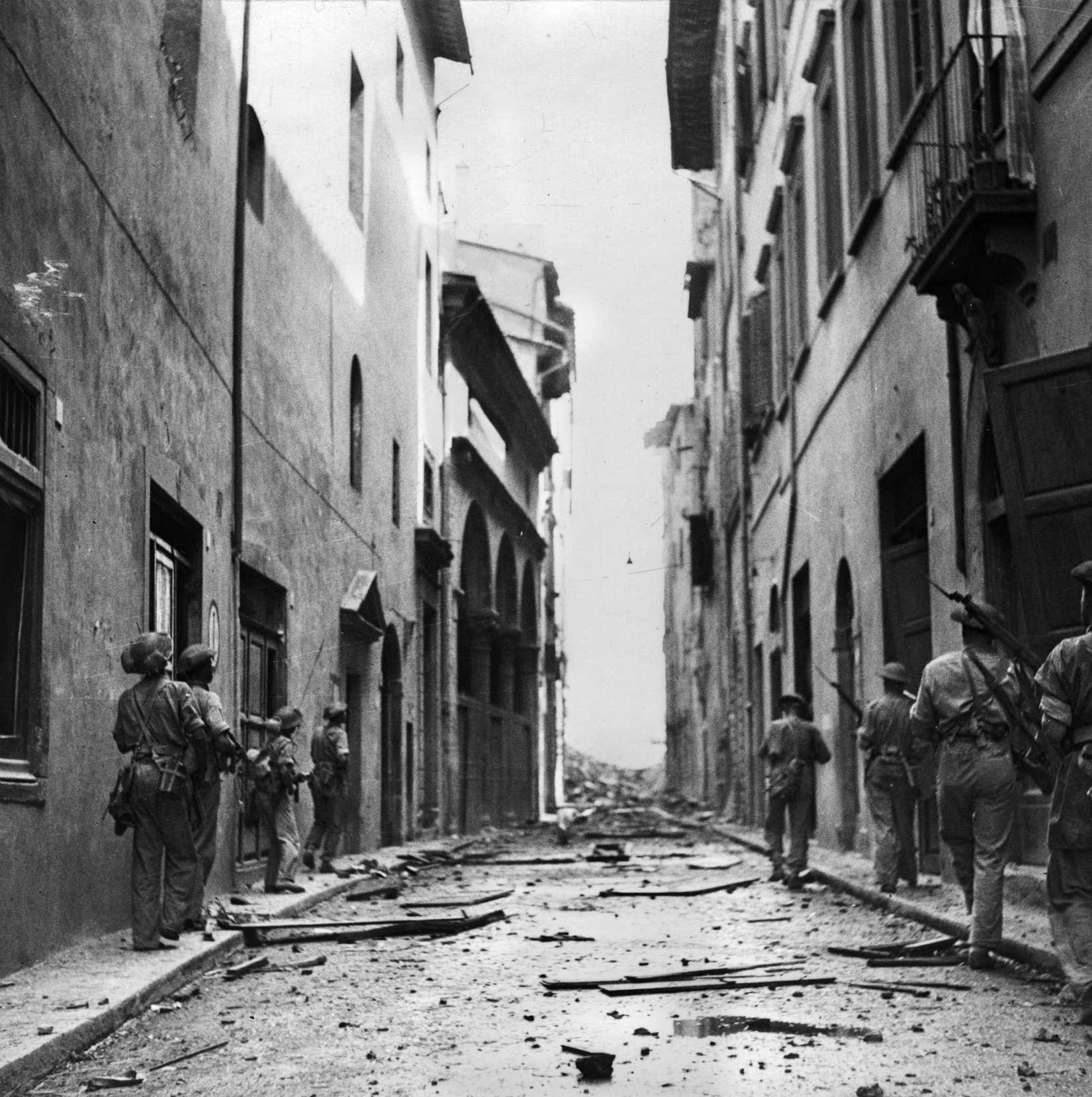
The oncoming fall and winter, along with combat fatigue and difficult terrain, preceded a time in the spring of 1945 when the division was to again be employed to exploit its speed and combat power. It was among those armored troops that would bring the war in Italy to a successful conclusion in May of that year.
After Florence was liberated, the division was deployed south to Siena. The French Moroccan Mountain Division had caused major problems with the civilian populace before the unit was redeployed for the invasion of southern France. The presence of the more ethically oriented South Africans helped heal the bitterness left by the French colonial troops.
The South African soldiers now got a dose of Americanism. Concerts were given by 28-year-old Frank Sinatra, bringing with him his nom de guerre, “The Voice.” The bewitching actress Katherine Hepburn came to meet and greet the soldiers when she could get away from the officers who often monopolized visiting entertainers. Theater performances open to all helped to stifle enlisted mens’ complaints about the officers’ conduct.
While the troops were relaxing, resting, maintaining equipment, replacing lost items, and doing a bit of training, the division staff was preparing for employment under American command.
On August 26, after a three-week Allied pause in operations, the South African Division crossed the Arno River, which had been held by light German outposts. Passing northward through the magnificent vineyards of Poggibonsi and Certaldo, the division crossed the Arno at the city of Empoli. Before entering the Apennines again, the troops crossed over the southward-flowing Bisenzio River at Prato on September 1.
The movement now was eastward so the division could get into position to take part in a II Corps offensive later that month. Once in position, the South Africans were diverted westward, and on September 11 they arrived at the Gothic Line outside the city of Lucca, just a short distance from the east coast of the Tyrrhenian Sea.
Remaining there for almost two weeks, the division again turned east and was at Pistoia on September 27. Taking part in the II Corps offensive, division troops fought for Monte Stanco north of Pistoia on October 13.
By now the Allies were becoming exhausted and haunted by rising casualties, poor weather, and few replacements. On October 20 the Allied offensive in Italy ground to a halt. On October 26 the South Africans pulled back and went into winter quarters near the town of Veggio.
On February 23, 1945, the 6th South African Armoured Division was back in the war, but it was not until the spring that it was again committed to combat. Now it was the final push to end the war, and the division’s mobile armored firepower was about to be brought to bear. It was once more operating as part of the U.S. II Corps of the Fifth Army.
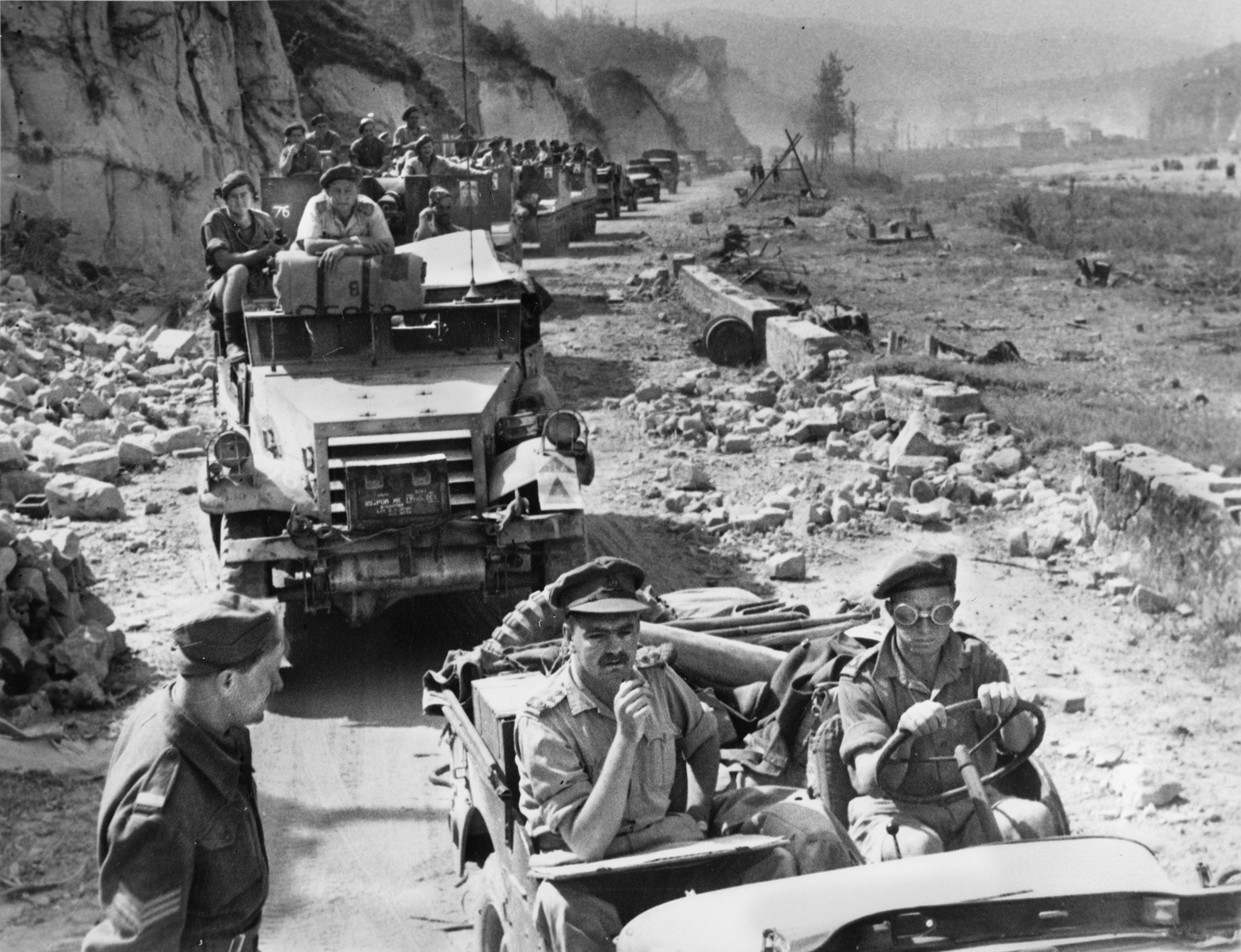
To get into the fight, the division left its rear-area assembly location and followed the main road east through Pistoia to Prato. There it turned north on the main road to Bologna, where it would debauch into the Po River Valley. But first the other corps infantry divisions would have to deal with a well-dug-in enemy effectively using mountainous terrain.
On April 15, II Corps advanced into the battle making but small gains. Lt. Gen. Lucian K. Truscott had massed his Fifth Army divisions on a relatively narrow front to force entry into the Po River Valley. But it took the elite infantry of the 10th Mountain Division, using its high-country expertise, to crack stubborn but ultimately futile enemy resistance.
By April 17, the mountaineers were out of the hills and moving to outflank Bologna, with the rest of II Corps close behind. By April 20 II Corps broke out into open country and raced for the Po River.
For their part on April 15 and 16, the South Africans attacking up the Florence-Bologna railroad liberated a number of small towns as they began their initial push of the offensive. Bringing its armor-protected mobility to bear on April 22, the division captured a key bridge east of Camposanto on the Panaro River. The pursuit of the withdrawing German forces was going full steam.
German resistance was spotty as the troops tried to escape over the major east-west-flowing rivers. Hoping to delay the swiftly advancing Allies, key crossing sites were held by the few remaining intact enemy combat units to allow a withdrawal northward. The lack of German bridging equipment hampered these efforts, while the Allies, having prepared in advance to deal with the rivers as obstacles, had plenty of bridging material moving forward with the advancing troops.
The enemy, experiencing great difficulty getting vehicles across the Po River and its tributaries, was easily caught by the highly motorized and mechanized Allies. Italian partisans in the river valley did not make the German retreat any easier as they seized important municipalities, thus denying the enemy key facilities and impeding German movement.
By April 23, the 6th South African Armoured Division was outside Bondeno close to the Po River. There elements of the division met units of the British V Corps advancing from the Italian east coast. The move encircled much of the enemy north of Bologna and facilitated the crossing of the Po.
The fast-moving South Africans established a bridgehead over the Po on April 25 west of the city of Felonica. Then it was a race to the Adige River west of Mantua, which was crossed on April 27. By now German resistance had almost ended as enemy troops surrendered in droves as they stumbled aimlessly north.
Once over the Adige River, the division pushed on to Camposampiero north of Padua, arriving there on April 30; this was their farthest advance east, as alleged significant German resistance in the region around Milan saw the division then ordered westward.
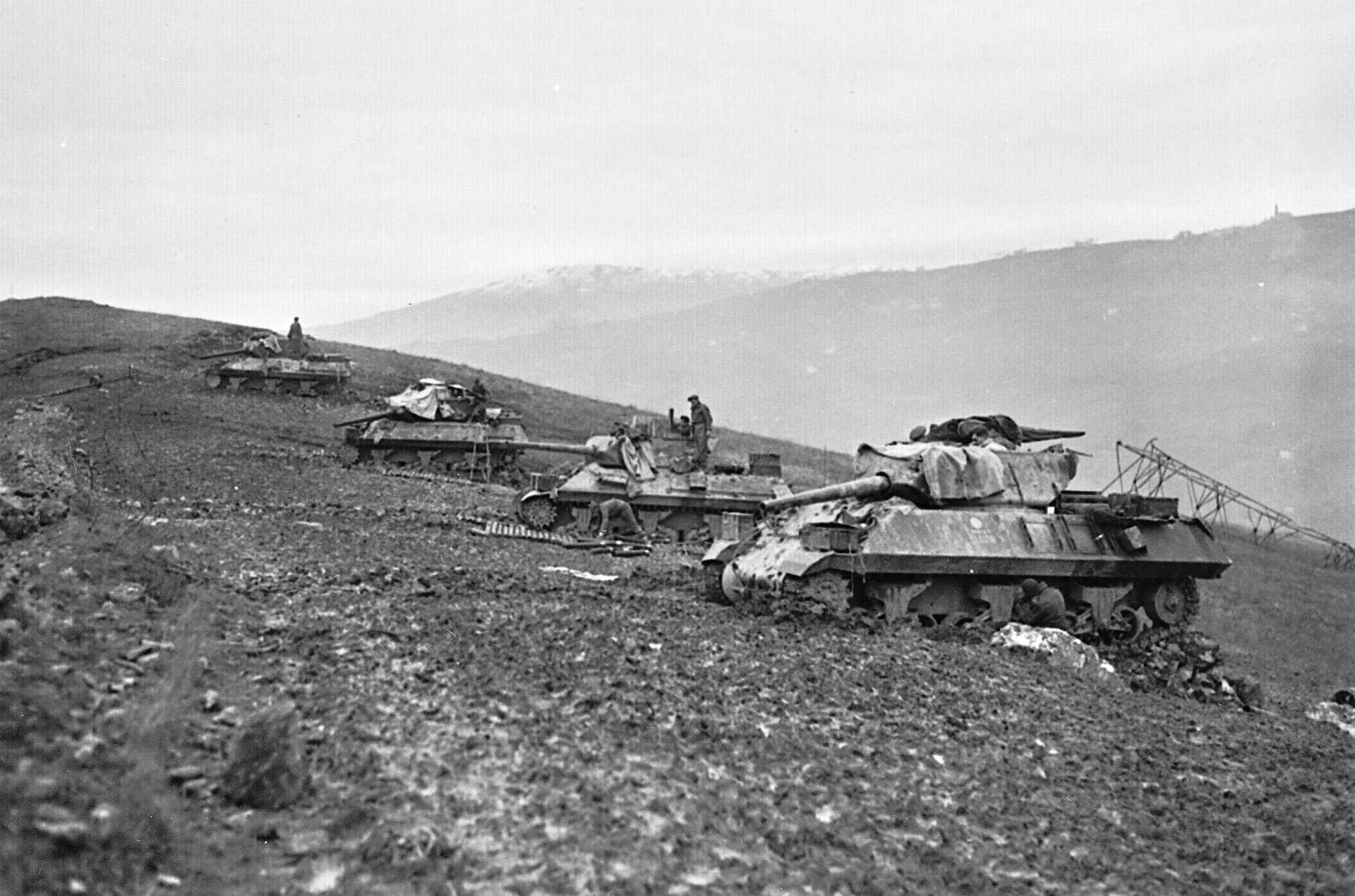
The resistance proved to be nonexistent, partly because the Italian partisans were intent on doing as much damage as possible to the German occupiers, especially the Gestapo, German sympathizers, and special SS troops formerly engaged in atrocities and murder.
On May 2, 1945, the war in Italy officially ended as the German high command surrendered to the Allies. The next day found the South Africans concentrated around Milan, where they absorbed the news that the war in Italy was finally over.
As with all the Allied forces, the termination of hostilities meant a fretful peace had arrived. While there was no longer any fighting, Italian reprisals were frequent, and the situation meant real peace was not yet at hand. It would take some time to bring daily life back to normal.
For the South Africans, however, the war was truly over. They sailed back to a country not physically ravaged but still suffering many casualties, both physical and mental. The 6th South African Armoured Division had suffered 711 killed in action, 2,675 wounded, and 157 missing—either as prisoners of war or being otherwise unaccounted for.
The losses were significant in light of those already suffered in the North African campaign and also since the soldiers who fought in Italy were volunteers because there was no conscription in the Union of South Africa.
Coming to the aid of Great Britain on land, in the air, and at sea spoke volumes for a country that not 50 years earlier had succumbed to the British Empire in the Boer War.
That the South Africans rallied against an aggressor located thousands of miles away, however, did not go unnoticed in the Free World, which applauded the Union of South Africa’s voluntary participation in the Allied victory.
